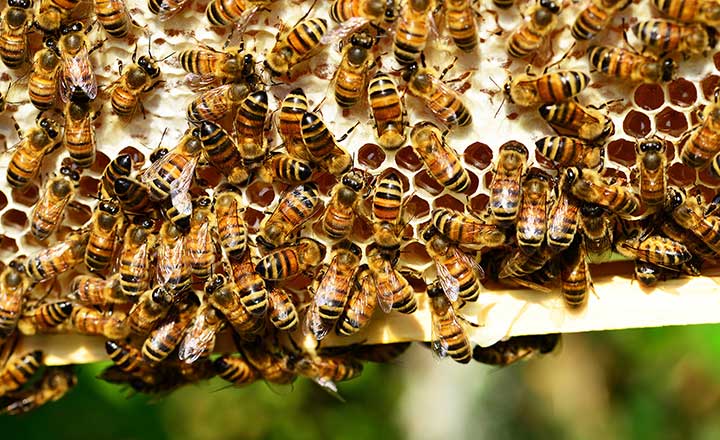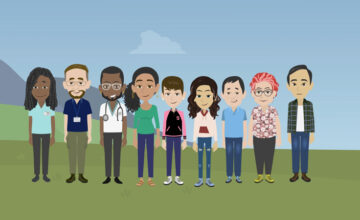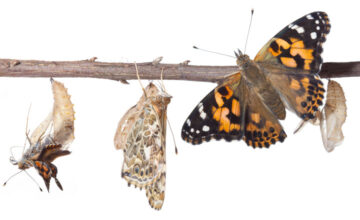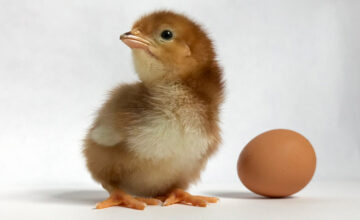
Hive Helpers Summary
Every spring and summer, youth and adults alike enjoy sweet-smelling flowers and listening to the buzzing sound that comes from the rapidly beating wings of busy bees. Through a series of seven lessons and multiple experiential activities, youth will learn how critical bees are to our agricultural industry and native ecosystems. They will explore different types of bees, their structures, and functions, how they forage for food, pollinate plants, and the ways bees share information. Youth will study native bees and the honey bee and discover the significant role they play in the production of delicious and healthy food that humans have been eating for centuries; such as apples, blueberries, cherries, watermelons, almonds.
Through hands-on and engaging exploration of habitat differences and diversity, youth will understand what honey bees, native bees, and other pollinators need in order to thrive. From creating a pollinator garden to building mason bee homes, youth will realize the importance of pollinator stewardship and ways they can support strong and vibrant ecosystems for pollinators. The curriculum concludes with an overview of how people can help bees. Youth will learn how to provide nesting habitats, use best management practices in beekeeping and building native bee homes. To share and engage others in caring about bees, youth will create an awareness campaign.
Age range: 8-10
Grade level: 4/Elementary
Overall
North Carolina Essential Standards in Science (2023):
LS.2.1.1 Use models to summarize the life cycle of animals including: birth, developing into an adult, reproducing, aging, and death.
LS.2.1.2 Obtain, evaluate, and communicate information to compare life cycles of different animals.
LS.3.2.1 Carry out investigations to explain the structures and functions of plants and how they are essential for life.
Introduction to Bees and Pollinators
North Carolina Essential Standards in Science (2023):
- LS.K.1.1 Engage in argument from evidence to summarize the characteristics of living organisms and nonliving things in terms of their: structure, growth, changes, movement, basic needs
- LS.1.1.1 Obtain, evaluate and communicate information to summarize the needs of different plants and animals.
- LS.1.1.2 Analyze and interpret data to compare how the needs of plants and animals can be met in different environments.
- ESS.4.3.1 Ask questions to infer whether changes in an organism’s environment are beneficial or harmful.
- ESS.4.3.2 Engage in argument from evidence to explain how humans can adapt their behavior to live in changing. environments (e.g. recycling wastes, establishing rain gardens, planting native species to prevent flooding and erosion).
- ESS.4.3.3 Obtain, evaluate, and communicate information to compare solutions to environmental problems impacting plants and animals.
- LS.5.2.3 Use models to infer the effects that may result from the interconnected relationships of plants and animals to their ecosystem.
Next Generation National Science Standards:
- 3-LS4-3. Construct an argument with evidence that in a particular habitat some organisms can survive well, some survive less well, and some cannot survive at all.
Youth will explore habitats of honey bees and native bees and consider ways bees adjust to changes in their environments.
Bee Anatomy
North Carolina Essential Standards in Science (2023):
- LS.K.1.2 Use models to exemplify how animals use their body parts to obtain food and other resources, and protect themselves.
- LS.4.1.1 Use models to explain that plants and animals have external structures that function to support survival.
- LS.4.1.2 Use models to explain that animals receive different types of information through their senses, process the information, and respond to the information in different ways.
Next Generation National Science Standards:
- 4-LS1-2 – Use a model to describe that animals receive different types of information through their senses, process the information in their brain, and respond to the information in different ways.
- 4-LS1-1 – Construct an argument that plants and animals have internal and external structures that function to support survival, growth, behavior, and reproduction.
Youth will observe and discover the different parts of a bee and the functions of each.
Bee Life Cycles
North Carolina Essential Standards in Science (2023):
- LS.4.1.3 Engage in argument from evidence to explain how differences among animals of the same population sometimes gives individuals an advantage in surviving and reproducing in changing habitats.
Next Generation National Science Standards:
- 4-LS1-2 – Use a model to describe that animals receive different types of information through their senses, process the information in their brain, and respond to the information in different ways.
- 4-LS1-1 – Construct an argument that plants and animals have internal and external structures that function to support survival, growth, behavior, and reproduction.
Youth will investigate the life cycle stages of bees.
Bee Homes
North Carolina Essential Standards in Science (2023):
- ESS.4.3.2 Engage in argument from evidence to explain how humans can adapt their behavior to live in changing. environments (e.g. recycling wastes, establishing rain gardens, planting native species to prevent flooding and erosion).
Next Generation National Science Standards:
- 4-LS1-1 – Animals have internal and external structures that function to support survival, growth, behavior, and reproduction.
Youth will study the basic shelter needs of bees and the different types of nests they create.
Bee Behavior and Roles
North Carolina Essential Science Standards (2023):
- LS.4.1.2 Use models to explain that animals receive different types of information through their senses, process the information, and respond to the information in different ways.
Next Generation National Science Standards:
- 4-LS1-1 – Construct an argument that plants and animals have internal and external structures that function to support survival, growth, behavior, and reproduction.
- 4-LS1-2 – Use a model to describe that animals receive different types of information through their senses, process the information in their brain, and respond to the information in different ways.
Youth will study how bees behave, as well as their roles in a honey bee hive. After learning about a colony’s social structure, youth will produce a skit to share what they learned.
Bee Habitats
North Carolina Essential Standards in Science (2023):
- ESS.4.3.2 Engage in argument from evidence to explain how humans can adapt their behavior to live in changing. environments (e.g. recycling wastes, establishing rain gardens, planting native species to prevent flooding and erosion).
- ESS.4.3.3 Obtain, evaluate and communicate information to compare solutions to environmental problems impacting plants and animals.
- LS.5.2.3 Use models to infer the effects that may result from the interconnected relationships of plants and animals to their ecosystem.
Youth will summarize what honey bees and native bees need to develop and thrive. They will explain optimal environmental conditions, food sources, and regional differences.
Bee Conservation
North Carolina Essential Standards in Science (2023):
- ESS.4.3.1 Ask questions to infer whether changes in an organism’s environment are beneficial or harmful.
- ESS.4.3.2 Engage in argument from evidence to explain how humans can adapt their behavior to live in changing. environments (e.g. recycling wastes, establishing rain gardens, planting native species to prevent flooding and erosion).
- ESS.4.3.3 Obtain, evaluate and communicate information to compare solutions to environmental problems impacting plants and animals
- LS.5.2.3 Use models to infer the effects that may result from the interconnected relationships of plants and animals to their ecosystem.
Next Generation National Science Standards
- 3-LS4-4 – Make a claim about the merit of a solution to a problem caused when the environment changes and the types of plants and animals that live there may change.
Youth will summarize ways that humans can improve conditions for the growth of bee and pollinator populations. Youth will communicate solutions to reduce the impact of humans on land, water, air, and other living creatures in their local ecosystems.




